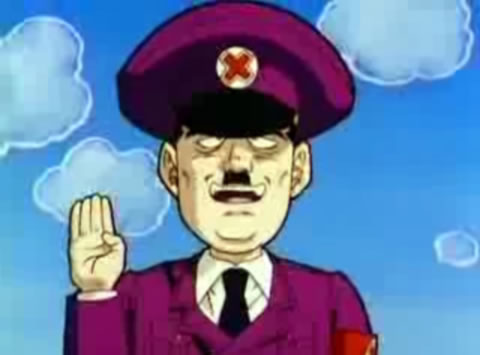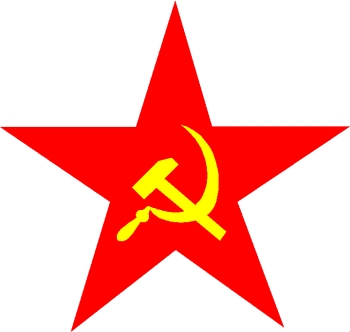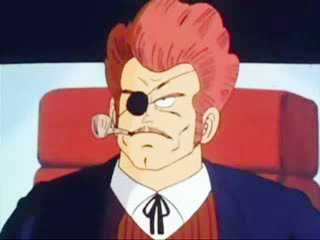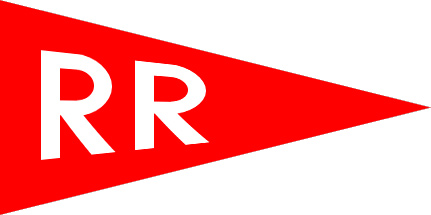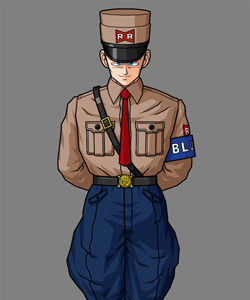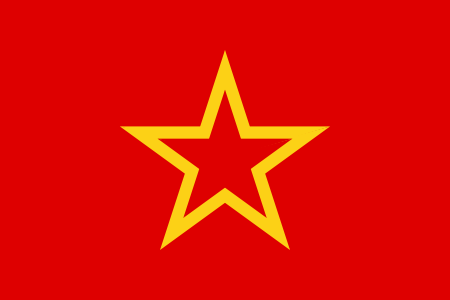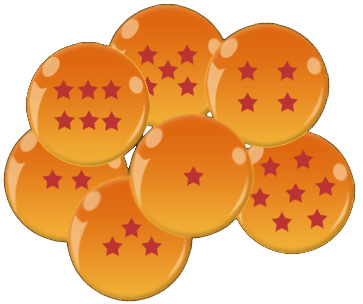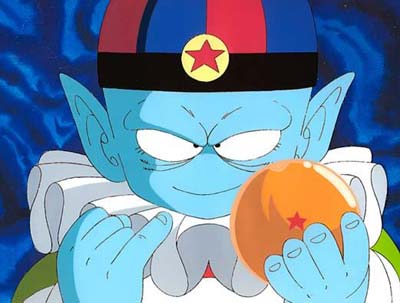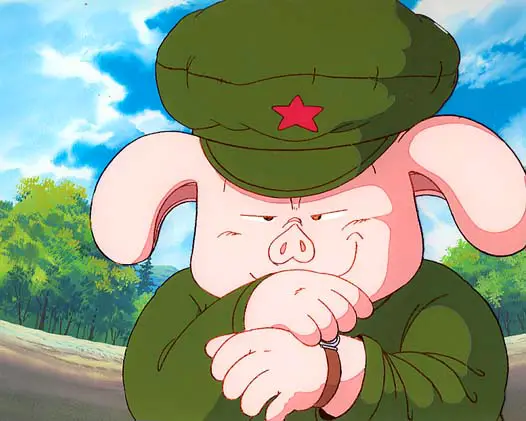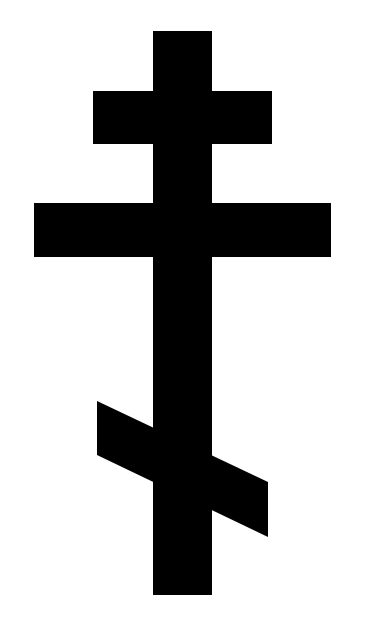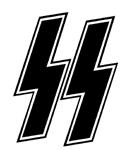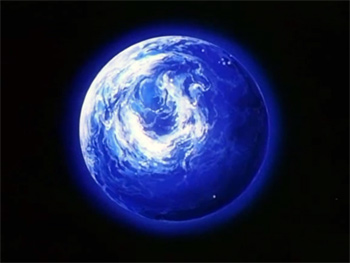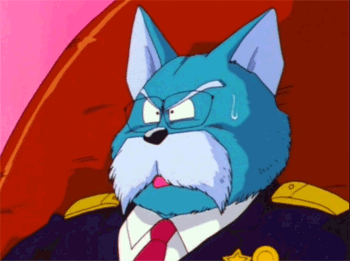5 Communist and Socialist Elements in Dragon Ball
There are many unique aspects to the Dragon Ball series and several may contain socialist and communist elements. In this article I will introduce 5 of them.
They are the following:
- Red Army
- Stars
- Hitler
- Hooked Cross Z
- One World Government
The elements on this list are the results of watching the Dragon Ball series and seeing what is already there. I am not making any of these up.
This article is not only here to reveal what was in front of us all along, but to also help explain how and why.
Please keep in mind that Dragon Ball is above all else a fun and lighthearted show with a heavy dose of silliness and martial arts antics. These socialist and communist elements do not detract from the Dragon Ball experience in any way.
It’s possible you may disagree with some of the inherent meaning behind these elements within the series, and a lot has been said about one of them in particular, but that does not take away from the fact that they are there to begin with and left for us to explore and understand.
If you have any thoughts on their meaning and why the creator’s put them in, then please state your thoughts in the comments below.
Now let’s begin our adventure.
Red Army
The Red Army is a term used to describe an army that gathers under the Red Flag, a militaristic symbol of a Communist force.
The term Red Army was first coined by its commander Leon Trotsky to refer to the newly created army of Soviet Russia after the Bolshevik Revolution of 1917. The term continued to be used in Europe for the next several decades and became synonymous with violence, bloodshed and power. Afterward, the term spread east when Mao Zedong created his own Red Army in China, which would later be known as the People’s Liberation Army. Both of these army’s militarily dominated Asia for several decades, including several wars with the Japanese, the birthplace of Dragon Ball.
We find the Red Army in Dragon Ball in the form of the Red Ribbon Army, a spoof like representation of a unified military threat. Most of the Red Ribbon Army and all of its leaders are “Foreigners,” i.e. Westerners (or talking bipedal animals). They represent the stereotypical socialist or communist army trouncing across the country and taking whatever they want with their military might.
The Red Ribbon Army has a collection of foot soldiers, military experts, assassins, evil scientists, technicians, a mobile division (speeders, trucks and tanks), a flight division (planes, helicopters), a sea division (subs, boats), killer robots, androids and special operatives (scuba divers, flamethrower shock troops) and more. Red Ribbon Army headquarters is a huge base surrounded by and filled with defensive weapons technology.
They appear to be depicted like the army of an evil villain in a James Bond film. Though more accurately they are reminiscent of the Red Army of Soviet Russia, upon which many of the James Bond villains were based.
The main theme that accompanies the Red Ribbon Army contains the following lyrics (translated):
Dye a red ribbon in a sea of blood
Hands of demons creep through the wilderness
A screen which reflects the dark desires
The leader, Red, watches and laughs
Blue, Black, Silver, the sky is scorched
Yellow, White, Brown, a mechanical army
Only if we conquer everything in this world
will our supreme pride be fulfilled
Soldier Red Ribbon
We’ll drop the world into a deep terror
Soldier Red Ribbon
The demons that came from hell
Red Ribbon Army
All of the soldiers are dressed resembling World War II era troops with a minimum of personal equipment, consisting primarily of a jacket, baggy trousers, a rifle and high-top boots. The Red Ribbon Army’s “RR” logo is placed on their chest and hat. The elite soldiers wear colored “RR” logo armbands to denote their superior rank.
The “RR” logo stands for “Red Ribbon” and is usually seen as a symmetrical red ribbon with white text placed anywhere the logo could be applied, such as on a military uniform or tank. But it is also seen on a Red Flag that is very similar to Stalinist and Nazi versions of the Red Flag.
In addition, one of their leaders, General Blue, is based on the ideal disciplined soldier of Hitler’s eugenics program. Blue is lean and strong with blond hair and blue eyes and it is implied that he is of German descent as he speaks German in one line of the English comic book, saying the phrase “Auf Wiedersehen” (Goodbye). He is the strongest fighter of all the Red Ribbon Army soldiers and matches up against Goku for several episodes, employing super human strength and psychic abilities. The funny thing is that in the anime Toriyama made him into a very effeminate (with implied homosexuality) character. He loves his own appearance, stops to smell the roses and is disgusted by mice. However in the comic book he is much more serious and clever.
The Red Ribbon Army is already well established by the time Goku comes along, and they have generated a healthy dose of fear and respect in the world community.
The Red Ribbon Army met its match time and time again at the hands of Goku, and he defeated them almost entirely by himself. He had some slight assistance from a few companions he met along the way, but there were no other Z warriors or main characters of the series involved. Just him against an entire communist inspired army. And he won.
Stars
Stars are another communist symbol, and they are frequently seen in the Dragon Ball series because each of the dragonballs contains stars. Red five-pointed stars in particular carry the most symbolism.
The five-pointed Red Star is a symbol of communism and socialism movements in general. There are different interpretations as to why this is, and the argument is often made that the five points represent the five fingers of the common worker’s hand, or the five major continents of the world that will one day be ruled under a communist government. It could also be indicative of the five forces that would bring communism to power, namely the youth, the military, industrial laborers, peasants and intelligentsia.
The Red Star is a symbol used throughout all Communist nations, along with the Sickle and Hammer, and can be seen on national monuments and government buildings as well as flags and military uniforms.
Often times the Red Star will stand alone or be outlined in yellow on a red background. Sometimes the stars will be completely yellow on a red background or feature multiple yellow stars arranged around one another, such as in the Chinese Communist Party flag.
The seven dragonballs are a golden orange amber type color and the five-pointed stars inside them are all red. The seven balls are named by the amount of stars that each ball contains, such as the 1-star ball, the 4-star ball and so on. The dragonballs naturally play a major role in the series and so we see this imagery again and again.
But we also see stars elsewhere.
We spot a red five-pointed star time and again on Emperor Pilaf, another diminutive character with an out of control ego questing for more power, power that can only be granted by the dragonball’s. Pilaf is a blue skinned impish character that repeatedly has his plans foiled by Goku’s presence. Goku doesn’t even go out of his way to interfere with Pilaf’s schemes; they keep bumping into one another as if it were fated to be.
Pilaf wears a red and blue cap with a black band around the rim. A red five-pointed star is placed on a yellow background front and center.
It’s possible that the star is there to represent his “Imperial Status” as stars have also been used throughout medieval history to denote royalty. But once again Toriyama has left us with no explanation.
The shape-shifting pig Oolong also wears a Red Star on his hat in the beginning of the series. He is a short and fat pig seen dressed in a green Chinese Communist style uniform similar to the one Mao Zedong would have worn.
It’s not known exactly why Toriyama decided to create him to look like a Chinese Communist soldier, but it’s possible that he was trying to take a jab at the CCP by dressing up a pig in their clothes and making him short, fat, obnoxious, loud and selfish. What do you guys think?
Goku and his traveling companion Bulma soon trick Oolong into traveling along with them on their quest for the dragonballs, and while Oolong never really improves his demeanor he does learn to tolerate his new friends, at least more so than he did initially. He stays with them for the rest of the series.
In addition, we see the star in every episode of Dragon Ball Z and Dragon Ball GT, as they are featured in the logos. Dragon Ball Z’s logo has a small orange 1-star ball standing in for the “O” in Dragon. Dragon Ball GT’s star is placed inside the “O” of Dragon and is a red five-pointed star on a yellow background, like the one Pilaf wore before. It can also be seen in logos of derivative works, such as the video game Dragon Ball Online where the red star inside a circle is used as the entire “O” of Dragon once again.
So why are there so many stars in Dragon Ball?
We are left to ponder.
Hitler
The biggest and most frequently talked about reference to socialism in Dragon Ball is Hitler himself. Hitler is in Dragon Ball Z Movie 12, Fusion Reborn (Japanese title: The Rebirth of Fusion! Goku and Vegeta!) as a guest villain who comes back from the dead after a demon takes control of the underworld and the laws of life and death.
Hitler comes back to life with his whole zombie army and rolls his tanks through the city, crushing cars and barking out orders like the dictator he is.
He is depicted as a diminutive man (once again) dressed in a purple Nazi uniform with a red “X” armband wrapped around his left arm. The red “X” is also on the front of his hat. This is because the Nazi double hooked cross (German: Hakenkreuz), which we often refer to as a Swastika, was replaced by the red “X” for censoring issues. Aside from those changes he looks just like his namesake, mustache and all.
Hitler starts to destroy the city and is challenged by Goku’s son Goten alongside Vegeta’s son Trunks. Hitler orders his men to fire at the pre-teen boys and they dodge the hundreds of tank shells and bullets with ease. The two pint-sized heroes make a mockery of his entire army while they punch and kick his tanks into tin cans.
Hitler screams to “Destroy the infidels!” and the pair turn into golden Super Saiya-jin fighters in response. Their hair and eyes change color and they are surrounded by golden flames. Hitler looks at them in confusion and replies, “Blonde hair, blue eyes, super strength, I should be recruiting them.” Then he yells, “… Shoot them down, they are no match for us, they are inferior!”
In the Japanese version after a bit more fighting with Goten and Trunks he says, “What are they, bright youths outshining the gods?”
These comments are in reference to Hitler’s philosophy and world perspective, as he stands looking at that which he pursued in life, a master race of perfect warriors that are superior to anything created on earth and powerful enough to conquer heaven. Slight downside is he’s not in control of them.
The line about “bright youths” is also a comment from Japanese parents on counter culture youth dying their hair blonde and other colors. The joke is that Hitler thinks they are rebellious kids.
Goten and Trunks kill Hitler and destroy his zombie army, sending them back to where they came from.
Hitler’s presence in the movie and the “golden haired supermen” that defeat him have led many fans online toward a presumption that DBZ is racist or has racist connotations. There are other pieces of supporting evidence to their arguments within the show, but this Hitler reference will almost invariably be used at some point in an argument on the topic.
This isn’t an issue that will be settled any time soon unless Toriyama decides to join the conversation.
Yet so far we have seen how Goku, who is believed to be natively Japanese by the Japanese people, has crushed a Western Red Army, repeatedly stopped an Emperor from ever gaining power, changed the wicked ways of a fat Chinese Communist pig, and now defeated Hitler himself through his superior genetic offspring of “supermen.”
What’s noteworthy is that this scene was cut from the German and French versions of the film due to strict prohibition of Nazi emblems and references. Likewise it was removed from the Hebrew version of the film to avoid the sensitive nature of the scene in relation to Holocaust survivors. It was also removed from the American televised version shown on Cartoon Network’s Toonami block.
Recognition of these separate yet relatable events that are already within Dragon Ball has caused some fans to question Toriyama’s motives.
Did Akira Toriyama have ulterior motives? Unfortunately the definitive answer to the question is unknown.
Keep in mind it’s a parody scene and is humorous, but it’s still there nonetheless. Quite an odd thing to include in a major theatrically released animated film, and it’s not something you would ever see in a Disney movie.
Hooked Cross Z
The Z in the Dragon Ball Z logo is very unique and unlike a regular roman alphabet Z.
The logo is something which has yet to be talked about on the net, and this may in fact be the first time anyone has discussed the logo in greater detail, at least from what my research has discovered. I guess it’s just taken at face value, like many other logos.
This is my attempt to explain why the Z is drawn the way it is, as it is displayed promptly in every single episode, movie, video game and piece of related merchandise. It is an iconic and easily recognizable logo and I am surprised no one has ever looked beyond its superficial value.
Perhaps you never gave it a second thought but it has some noteworthy aspects.
This Z has two unique elements. These are notably the hooked cross ends and the slanted cross in the middle.
The hooked cross ends of the Z in the logo are the ends that point both diagonally up and down, like the German hooked cross (German: Hakenkreuz). A normal Z does not have these, and these two ends appear similar to a single hooked cross.
Please remember that the Swastika was two hooked crosses placed on top of one another and inverted. I am not implying that the Z logo is a Swastika, rather I am saying that it resembles a single hooked cross. If you placed another Z on top of the original than it would resemble a stylized swastika, but this is never seen in the series and a presupposition like that should not be made. The Z just is what it is.
The second element is the slanted cross in the middle of the Z. The cross is slanted from the top left to the bottom right in a form similar to a Russian cross.
A Russian cross is a variant of the familiar Latin cross, and is a three tiered cross (a Latin cross is one tiered). The Russian cross’s first tier is a horizontal line near the top that stretches across half the horizontal distance. The second tier is placed just beneath it and stretches all of the horizontal distance. The third tier is short and placed near the bottom, where Jesus’ feet would have hung while on the Cross. It is slanted from the top left to the bottom right.
There are different interpretations as to what the slanted cross means in the Biblical sense, but I’ll leave those to the Biblical scholars.
What does it mean in Dragon Ball Z? Nothing as far as I can tell. There does not appear to be any correlation between the slanted cross and the contents of the Dragon Ball series.
But in researching Z’s and their overall meaning I found that the Z is often associated with the lightning bolt, and a Z with a horizontal cross in the middle of it was once used by Hitler to denote his Socialist party, as seen in the yellow on black flag (pictured).
In addition, the Z and S in the German language are used interchangeably, as seen in the symbol for “SS,” two sharp S/Z lightning bolt shapes next to one another.
Furthermore, a single S or Z with a horizontal cross in the middle of it was the precursor to the use of a full double cross Swastika. This is the single hooked cross. At some point the single and the double hooked cross began to be used alongside one another.
Moreover, a study of Hitler’s signature shows that in the late 1930’s and early to mid 40’s he signed documents with an S/Z shaped lightning bolt shape, this time with a slanted cross like in the DBZ logo and third tier of the Russian cross.
Now all of that may sound very interesting, but there are no hard and fast correlations between Dragon Ball and the socialist party of Germany or the Nazi party and I don’t wish to make accusations or lead anyone to assumptions based on a small amount of conjectural evidence. This is simply the best explanation I’ve come up with so far for the Z’s unique shape.
It’s entirely possible that Akira Toriyama merely thinks this particular Z looks nice and that it has no deeper meaning. This would be in line with his usual explanations of doing what is easiest. If he comes out and says something to that effect, then the mystery is solved. But until he does we are left to our own devices to try and figure out why the Z is drawn like it is.
We are each free to our own interpretations. I like to ask “Why?” and Toriyama likes to stay quiet. So far this is the best explanation I can produce and I’m totally open to it being refuted with logical arguments to the contrary. If you have a rational alternative explanation, then please let me know.
What do you think? Does this theory make sense?
Whatever the case may be, we march onward…
One World Government
The goal of communism is to unite the world in a communist controlled utopia, ruled by the people. The goal of socialism is state ownership and control of the fundamental means of production and distribution of wealth, to be achieved through restructuring existing capitalist or political systems.
The government in Dragon Ball doesn’t exactly fit the communist description, as it is ruled by a King, but the concept of a single united world government is still strong.
In Dragon Ball the entire planet is ruled by the King of the Earth, a talking bipedal dog named King Furry (Japanese name: King Koku) who resides in the World Capital. There are several capitals, such as the Northern Capital, Central Capital, etc, similar to a Dynastic Chinese feudal organization system (Beijing, Nanjing, Xi’an, etc.).
King Furry seems to run things fairly peacefully and everyone appears to get along rather well. Of course the world is not without its problems by any means and there is an army established to suppress any serious evils (such as aliens and super villains that attack the kingdom or planet) as well as city employed police forces and systems of law to handle domestic issues. There are individual mayors within the 43 districts of the complete landmass, but they all pay homage to the king.
There are no other countries on this planet, and because there is only one large landmass in Dragon Ball it means that there is only one world government. One government is in charge of everything, including (presumably) banks, schools, large farms and production facilities. Private and smaller enterprises like local village farms and residential areas appear to be managed without supervision, such as Goku’s house in the mountains, but city life appears somewhat regulated, as almost every city across the world looks the same.
I noticed this same thing while traveling through China in 2003. Were it not for the traditional ancient buildings, palaces and natural landscapes, all of the cities would look the same. Everything created by the government had the same style.
So how was this socialist utopia formed? The country must have been broken up at some point and then unified and placed under the leadership of a king at another. It’s not known when this happened, but no world of such diversity, race and culture could have been unified at the outset. There must have been some type of social change which led to this grand unification. But we’re given no evidence or hint as to what this could have been. A large threat or looming crisis? Military conquest? A slow and gradual shift of power toward the few? It’s unknown.
Now granted that it’s an immense landmass with great differences in environment and ethnic people, but it’s all ruled by the same talking dog. Whatever that talking dog says, goes!
Conclusion
These were 5 communist and socialist elements in Dragon Ball.
Hopefully this article helped shed some light on a few of the more unique aspects of Dragon Ball and helped you think a little more about the series and its creator.
Perhaps Toriyama had more in mind when he created this show then is visible at first glance. There are definitely some unique aspects. Maybe he’s trying to tell us something and provide a message. If so, what is it? The unanswered questions are food for thought.
The neat thing is that you can still find all of these elements there today, so please feel free to watch the show and come up with your own interpretations. I’d love to hear them.
' . $comment->comment_content . '
'; } } else { echo 'No comments found.'; }